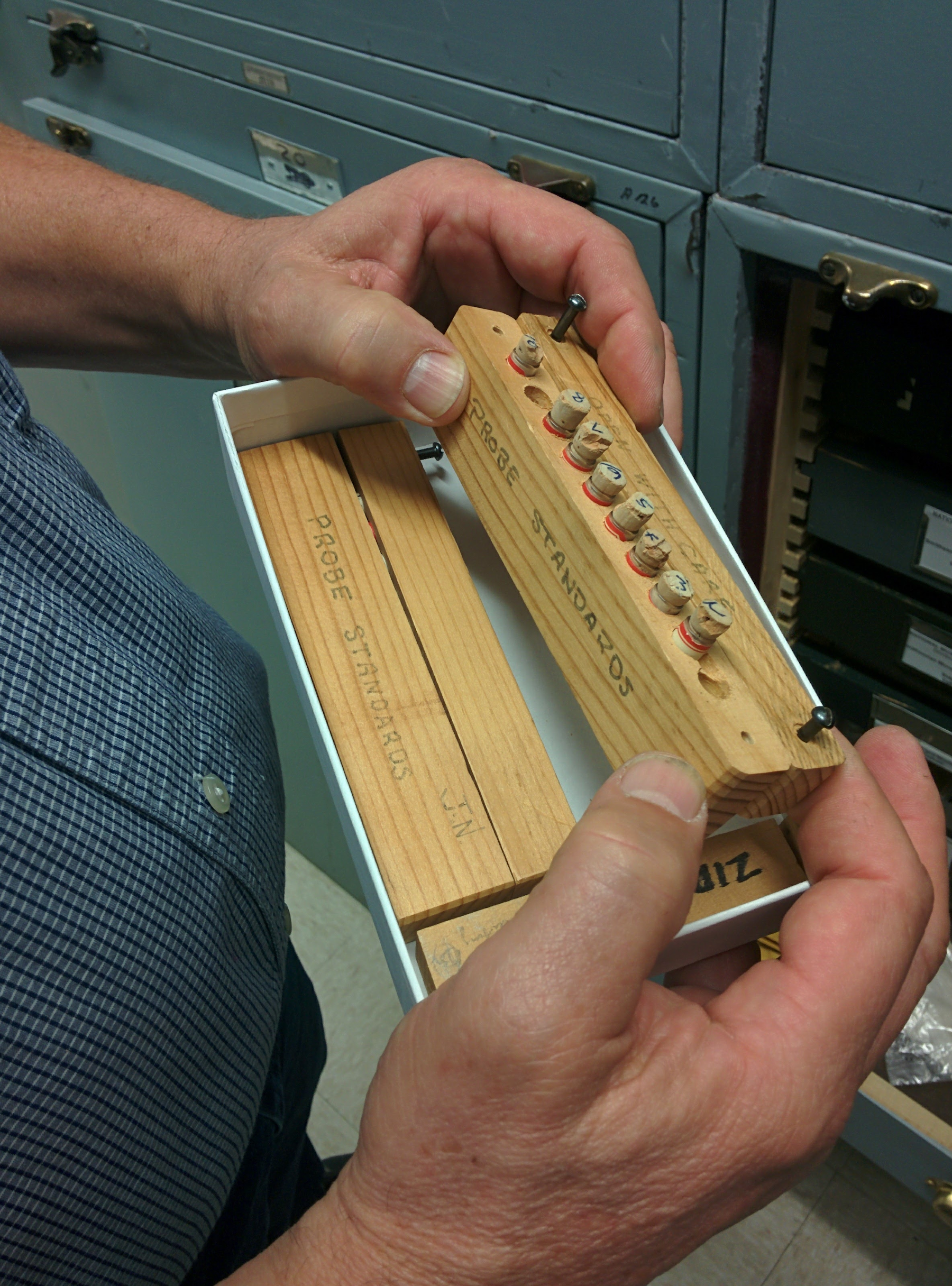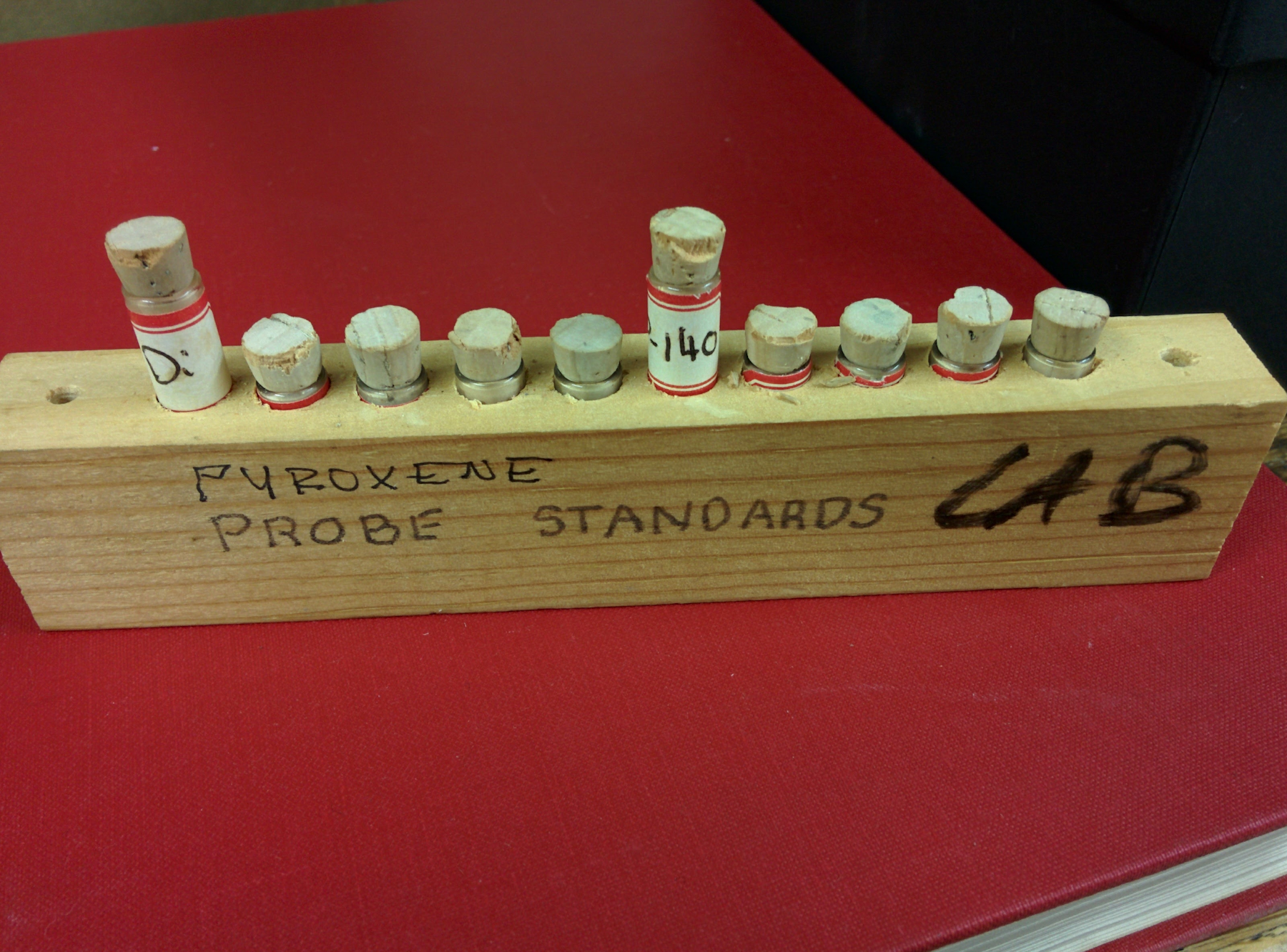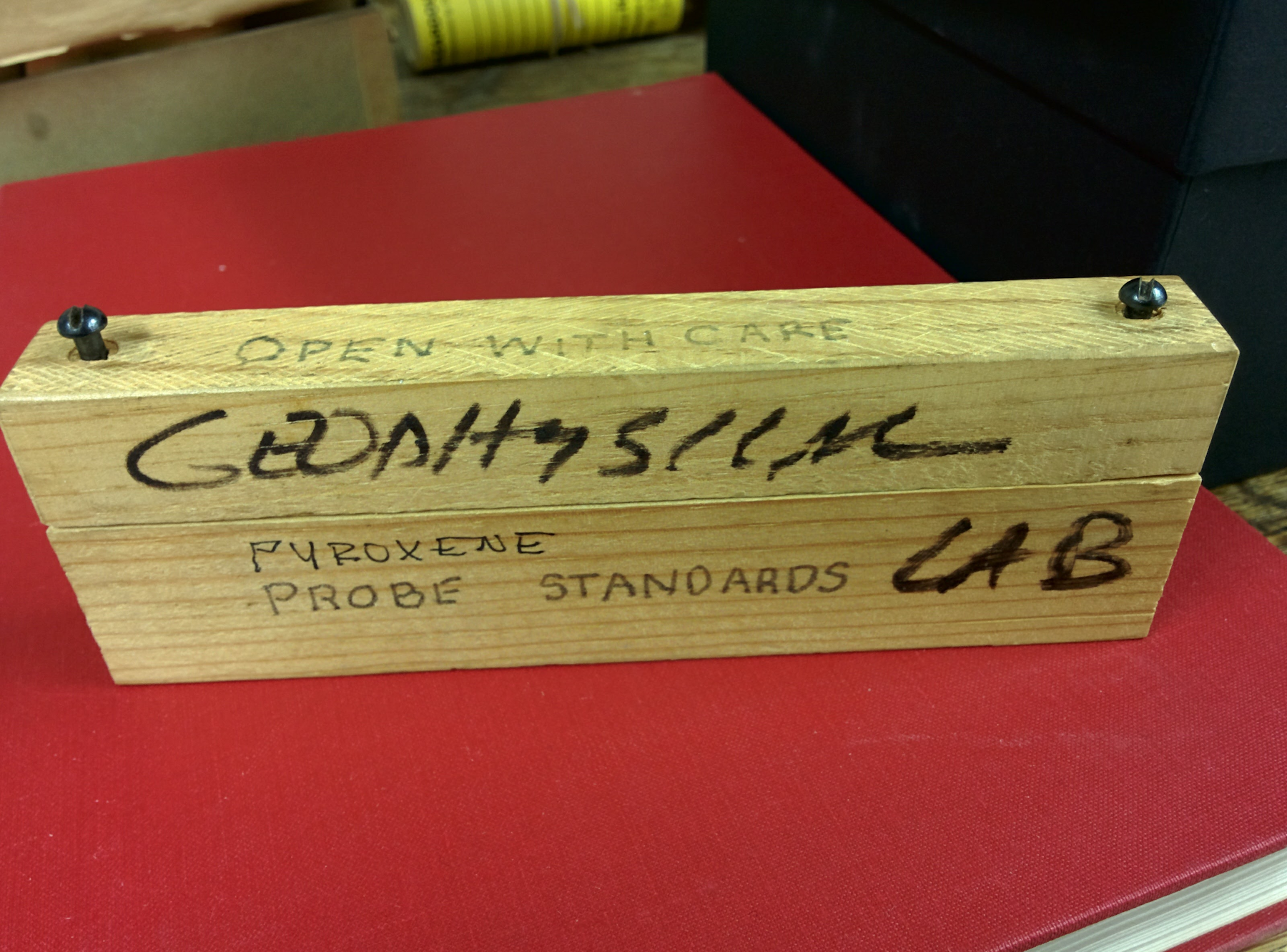61
EPMA Standard Materials / Re: Geophysical Lab Probe Standards
« Last post by Probeman on July 18, 2024, 07:32:35 AM »Several people responded but Andrew gave a very informative reply:
Hello,
The attached paper of MacGregor (1974) mentions EnAl-5, EnAl-10, and EnAl-15 in his Table 1, and mentions them again as glasses in the Starting Material section of his Appendix. The Acknowledgments mention a fellowship ath the Geophysical Lab and also thank Dr. F.R. Boyd.
Marinenko (1982) in Table 3 of NBS Special Publication 260-74 describes “ENAL 10 – from Geophysical Laboratories)”, “a synthetic glass”, with the same composition, but presented as elements rather than oxides.
P-140 is apparently olivine from the Balsalm Gap dunite in North Carolina.
A typewritten letter, headed Finland, April 20, 1971 from H.B. Wiik (Hugo Birger Wiik of Finland) to F.R. Boyd gives the composition of the olivine (which includes 0.13 Al2O3). In my photocopy, this letter is annotated with a handwritten note: “Zies give 7.28 Fe as FeO”. The exact same analysis of Wiik is reproduced in Table J on page 17 of the PhD thesis P.J. Lawless (Cape Town, 1978).
My researches on P-140 in 2016 yielded:
The material may have been collected by Hess, and a hand-specimen is described in detail in the appendix of:
Davis, G.L. and Hess, H.H., 1949. Radium content of ultramafic igneous rocks; II, Geological and chemical implications. American Journal of Science, 247(12), pp.856-882.
The wet-chemical analysis was performed by E.G. Zies of the Geophysical Laboratory, according to a footnote to Table 2 of:
Boone, G.M. and Fernandez, L.A., 1971. Phenocrystic olivines from the eastern Azores. Mineralogical Magazine, 38, pp.165-78.
This olivine analysis was apparently reported by F.R. Boyd of the Geophysical Laboratory, according to the supplementary Table A1 in the appendix (p. 13) of:
Hofmeister, A.M., Xu, J., Mao, H.K., Bell, P.M. and Hoering, T.C., 1989. Thermodynamics of Fe-Mg olivines at mantle pressures: Mid-and far-infrared spectroscopy at high pressure. American Mineralogist, 74, pp. 281-306.
http://www.minsocam.org/msa/ammin/Supplemental_Data/Vol%2074%20p0281%20AM-89-400.pdf
Finally, a partial analysis of this same olivine is found in Table 2 of:
Jarosewich, E., Parkes, A.S. and Wiggins, L.B., 1979. Microprobe analyses of four natural glasses and one mineral: an interlaboratory study of precision and accuracy. Smithsonian contributions to the earth sciences, 22, pp.53-67.
Based on the literature references that I have found, it appears that the P-140 Balsam Gap olivine (forsterite) was used as an electron microprobe standard at the following, in addition to the Geophysical Laboratory:
- Chicago (Mason et al., 1982);
- MIT (Jarosewich et al., 1979);
- Yale (Boone and Fernandez, 1971).
In addition to the notes about sample P-140 in Davis and Hess (1949), I did note that in the Carnegie Institution of Washington Year Book No. 46 (published 1947) it was reported (p. 38) that about 1000 pounds of the Balsam Gap dunite were collected.
I corresponded with Shaun Hardy at Carnegie, who inspected Dr. Zies’ notebooks and research files, and Dr. Boyd’s correspondence and research files, but no luck with regard to Balsam Gap olivine. Shaun put me in touch with the Smithsonian (Leslie Hale), but no documentation was available.
Finally, my own analyses of the P-140 olivine in the University of Alberta lab do not show the same high Al contents. I suspect that the analysis of Wiik was by wet chemistry, and perhaps contaminated with some amount of clinochlore or some such.
I hope that this information proves useful to you.
Best regards,
Andrew
Andrew Locock, PhD
EPMA Lab Manager
Dept. of Earth and Atmospheric Sciences
Room 1-26 Earth Sciences Building
11223 Saskatchewan Drive NW
University of Alberta
Edmonton, Alberta, Canada T6G 2E3
Tel: 780-492-3191
Fax: 780-492-2030
www.eas.ualberta.ca/eml/
www.microprobe.ca
Hello,
The attached paper of MacGregor (1974) mentions EnAl-5, EnAl-10, and EnAl-15 in his Table 1, and mentions them again as glasses in the Starting Material section of his Appendix. The Acknowledgments mention a fellowship ath the Geophysical Lab and also thank Dr. F.R. Boyd.
Marinenko (1982) in Table 3 of NBS Special Publication 260-74 describes “ENAL 10 – from Geophysical Laboratories)”, “a synthetic glass”, with the same composition, but presented as elements rather than oxides.
P-140 is apparently olivine from the Balsalm Gap dunite in North Carolina.
A typewritten letter, headed Finland, April 20, 1971 from H.B. Wiik (Hugo Birger Wiik of Finland) to F.R. Boyd gives the composition of the olivine (which includes 0.13 Al2O3). In my photocopy, this letter is annotated with a handwritten note: “Zies give 7.28 Fe as FeO”. The exact same analysis of Wiik is reproduced in Table J on page 17 of the PhD thesis P.J. Lawless (Cape Town, 1978).
My researches on P-140 in 2016 yielded:
The material may have been collected by Hess, and a hand-specimen is described in detail in the appendix of:
Davis, G.L. and Hess, H.H., 1949. Radium content of ultramafic igneous rocks; II, Geological and chemical implications. American Journal of Science, 247(12), pp.856-882.
The wet-chemical analysis was performed by E.G. Zies of the Geophysical Laboratory, according to a footnote to Table 2 of:
Boone, G.M. and Fernandez, L.A., 1971. Phenocrystic olivines from the eastern Azores. Mineralogical Magazine, 38, pp.165-78.
This olivine analysis was apparently reported by F.R. Boyd of the Geophysical Laboratory, according to the supplementary Table A1 in the appendix (p. 13) of:
Hofmeister, A.M., Xu, J., Mao, H.K., Bell, P.M. and Hoering, T.C., 1989. Thermodynamics of Fe-Mg olivines at mantle pressures: Mid-and far-infrared spectroscopy at high pressure. American Mineralogist, 74, pp. 281-306.
http://www.minsocam.org/msa/ammin/Supplemental_Data/Vol%2074%20p0281%20AM-89-400.pdf
Finally, a partial analysis of this same olivine is found in Table 2 of:
Jarosewich, E., Parkes, A.S. and Wiggins, L.B., 1979. Microprobe analyses of four natural glasses and one mineral: an interlaboratory study of precision and accuracy. Smithsonian contributions to the earth sciences, 22, pp.53-67.
Based on the literature references that I have found, it appears that the P-140 Balsam Gap olivine (forsterite) was used as an electron microprobe standard at the following, in addition to the Geophysical Laboratory:
- Chicago (Mason et al., 1982);
- MIT (Jarosewich et al., 1979);
- Yale (Boone and Fernandez, 1971).
In addition to the notes about sample P-140 in Davis and Hess (1949), I did note that in the Carnegie Institution of Washington Year Book No. 46 (published 1947) it was reported (p. 38) that about 1000 pounds of the Balsam Gap dunite were collected.
I corresponded with Shaun Hardy at Carnegie, who inspected Dr. Zies’ notebooks and research files, and Dr. Boyd’s correspondence and research files, but no luck with regard to Balsam Gap olivine. Shaun put me in touch with the Smithsonian (Leslie Hale), but no documentation was available.
Finally, my own analyses of the P-140 olivine in the University of Alberta lab do not show the same high Al contents. I suspect that the analysis of Wiik was by wet chemistry, and perhaps contaminated with some amount of clinochlore or some such.
I hope that this information proves useful to you.
Best regards,
Andrew
Andrew Locock, PhD
EPMA Lab Manager
Dept. of Earth and Atmospheric Sciences
Room 1-26 Earth Sciences Building
11223 Saskatchewan Drive NW
University of Alberta
Edmonton, Alberta, Canada T6G 2E3
Tel: 780-492-3191
Fax: 780-492-2030
www.eas.ualberta.ca/eml/
www.microprobe.ca


 If you can't see some "in-line" images in a post, try "refreshing" your browser!
If you can't see some "in-line" images in a post, try "refreshing" your browser! Recent Posts
Recent Posts




